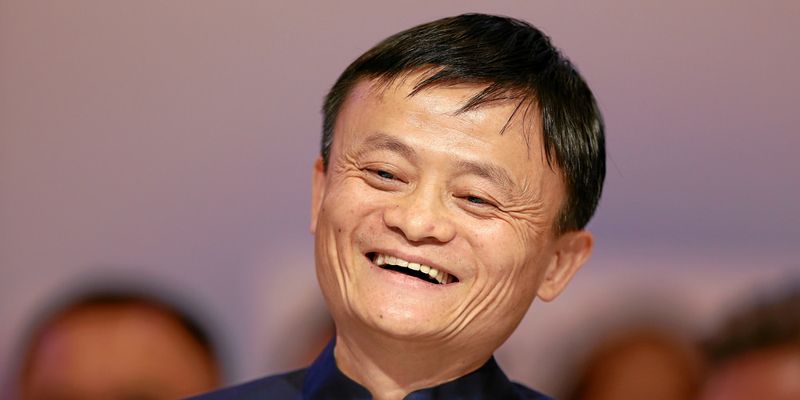5 technologies that were key to Alibaba clocking $25.3 B GMV in 24 hours
The Alibaba Group recently announced that it had clocked $25.3 billion of gross merchandise volume (GMV) through its payment platform, Alipay, on November 11, 2017. This is an increase of 39 percent compared to 2016. Mobile GMV settled through Alipay in 2017 accounted for 90 percent of total GMV.
In a company statement, Alibaba noted that one of the many things that helped them achieve this feat was their system’s ability to manage the spike of up to 3,25,000 orders per second at peak, coming through this '24-hour stress test'. Some of the other interesting trends include:
- Ninety-five percent of customer service inquiries during the Global Shopping Festival was handled by Alibaba’s self-developed virtual customer service chatbot.
- More than 400 million customised online banner ads were generated for merchants by Alibaba’s AI-based marketing design platform.
- Over 60 billion personalised pages on the Taobao and Tmall apps were developed for consumers and populated with AI-based product recommendations.

Image credit- Alibaba
According to Alibaba, this was made possible by the technology leadership of their team. The company gave an overview of their innovations in the areas of artificial intelligence (AI), machine learning, virtual reality, and cloud computing that empowered merchants to operate more efficiently and enable more engaging consumer experience.
Jeff Zhang, Alibaba Group’s Chief Technology Officer (CTO), noted in a statement that the annual Global Shopping Festival is the biggest test for their technology. He said,
This year, we fully adopted cloud management and leveraged AI on a much larger scale in our infrastructure and systems, resulting in greater operation efficiency while largely reducing IT costs. In addition, we offered innovative technology solutions to enable our partners in areas including product assortment, inventory management, payments and logistics to meet the huge spike in demand during the Global Shopping Festival.
He also said that Alibaba would make these solutions available through its cloud platform to benefit more enterprises and the larger society beyond this event.
To support the unprecedented volume of computing tasks for browsing, ordering, payments and logistics arrangements securely and smoothly, Alibaba Group had leveraged data technologies in a number of ways to develop its robust infrastructure in a cost-effective manner. Here are some of the highlights of how Alibaba managed its infrastructure behind the scenes.
1) Colocation technology to enhance CPU utilisation
Multiple data centres are managed as warehouse-scale computers, where jobs are scheduled automatically for optimisation. Backed by the architecture of one of the world’s largest hybrid clouds with optimised computation and millions of containers, Alibaba Group had developed its own colocation technology.
By colocating online services and analytics workloads, the daily average CPU utilisation was increased to above 40 percent, with peak utilisation over 60 percent. Alibaba noted that their unitisation rate went even higher during the Global Shopping Festival, reducing the cost of colocated clusters compared to 2016 by more than 30 percent.
2) Intelligent engine to optimise system usage
Alibaba had developed an intelligent engine named 'Da-ling', to automatically allocate computation resources in a timely manner in order to achieve optimal system usage and stability. The engine was used for the first time in this year’s Global Shopping Festival, and it is estimated to have cut down the number of servers required by approximately 30 percent.
3) Autonomous end-to-end load testing
Testing was performed multiple times to prepare for the predicted load increases at the peak traffic spikes on November 11. This intelligent, autonomous technology saved around 1,000 man-days worth of engineering work this year in comparison to previous years.
With an estimated 1.48 billion payments processed during the 24-hour period, Alibaba claims to have managed a spike of up to 3,25,000 orders per second at peak load.
4) Patrol robot for datacentre monitoring
A patrol robot was developed for the first time to undertake round-the-clock monitoring of conditions within Alibaba Cloud’s North China data centre during the Global Shopping Festival. It is estimated that the robot removed up to 30 percent of the repetitive operations tasks related to data centre monitoring.
5) Alibaba Cloud’s CDN Node Deployment
Alibaba Cloud, the cloud computing arm of Alibaba Group, deployed over 1,200 content delivery network (CDN) nodes on its expanding global cloud infrastructure to support the traffic on the company's Tmall and Taobao platforms. Alibaba noted that by using data centres in 15 locations worldwide, the company was able to distribute images, video and live streaming to multiple locations around the world quickly and smoothly without system bottlenecks.
Related read- How an English teacher conquered China : Wisdom of Jack Ma condensed into 33 quotes

On the customer facing-front, Alibaba leveraged multiple technologies like artificial intelligence, inventory management, augmented reality and virtual reality to encourage customers to shop more-
1) Virtual customer bot to handle enquiries
For merchants, Alibaba had developed a virtual customer service robot to respond to round-the-clock enquiries. The robot, named 'Store Xiaomi', was developed based on large-scale product data points, and was equipped with self-enhancing capabilities to handle a wide range of online enquiries from prospective customers. The service was provided to Taobao and Tmall merchants of more than 50 product categories.
The company said that since the start of the pre-sale period from October 20, Store Xiaomi had handled on average 3.5 million customers each day across the platforms, compared to an average of 230 customers per human customer service representative.
2) Custom banner ads powered by an AI designer
'Lu Ban', named after the patron saint of craftsman and builders in ancient China, is an AI-based marketing design platform that helped merchants create customised online banner ads for their stores automatically, using technologies such as deep learning, reinforcement learning, Monte Carlo tree search and image search.
Through self-learning, Lu Ban had integrated this year's 11.11 marketing elements and created millions of banner designs. More than 400 million customised online banner ads were generated during the 11.11 sale.
3) Inventory management
'Tmall Smart Choice' is a system that helps merchants identify products that have the potential to become best-selling items. It uses a model that factors in variables--including customers' needs and purchasing power, merchants' credibility and service reputation, product review and ratings, price range and seasonality--so as to forecast which merchandise would be popular among the stores' target customers.
The analysis and forecast provided by Tmall Smart Choice helped merchants better manage their inventory and bring in more traffic for popular products.
4) Al-powered fashion mix-and-match suggestions
'The Fashion AI' is a platform that provides Al-powered fashion mix-and-match suggestions for consumers. The fashion solutions the platform suggests are based on over 5,00,000 source data of fashion and dressing tips from stylists on the Taobao and Tmall platforms, as well as the store product images and mix-and-match recommendations by merchants.
In selected offline stores, consumers can take the radio frequency identification (RFID)-embedded clothing to the smart fitting room, where the screen inside the room will automatically recognise the selection of garments and propose items in different styles, which consumers can select and try on. Consumers can then choose whether to directly purchase the suggested matching items in the store or place the order online instead.
5) Virtual fitting rooms
The mobile 'Virtual Fitting Room' function on Taobao/Tmall app can virtual dress the customers with their selected fashion items and show them how they would look on the phone screen. Customers need only to upload a photo of themselves, input their height and weight data.
Participating brands with products available for virtual fittings included Polo Ralph Lauren, Victoria's Secret, Gap/Old Navy, Guess, Adidas, Fila, Levis, among others.
6) Gamification through augmented reality
Through an augmented reality game titled 'Catch the Cat', via Alibaba's Taobao and Tmall apps, the company encouraged more online shoppers to visit brick-and-mortar stores. Sixty-five brands including P&G, Disneyworld, Pizza Hut and KFC had joined the game through smart stores across China.
Website- Alibaba India
Related read- ‘India is very important for Alibaba,’ says CEO Daniel Zhang











![[Funding alert] Media-tech startup Toch raises over $400K in round led by Inflection Point Ventures](https://images.yourstory.com/cs/2/b3bfb136ab5e11e88691f70342131e20/Imagevgyw-1586973026465.jpg)